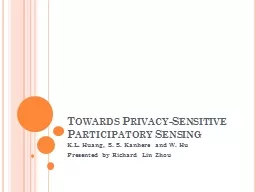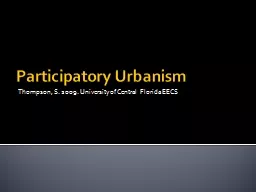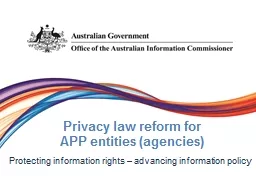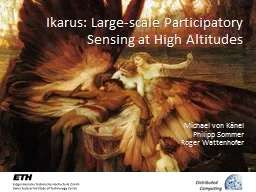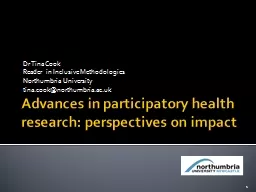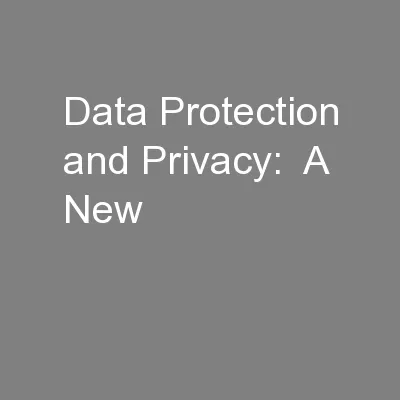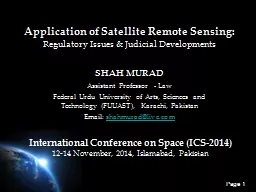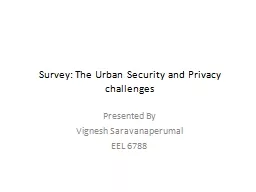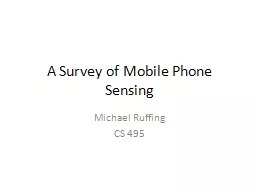PPT-Towards Privacy-Sensitive Participatory Sensing
Author : mitsue-stanley | Published Date : 2016-07-10
KL Huang S S Kanhere and W Hu Presented by Richard Lin Zhou Overview Significance of Privacy Sensitiveness Earlier Developments Tessellation Microaggregation
Presentation Embed Code
Download Presentation
Download Presentation The PPT/PDF document "Towards Privacy-Sensitive Participatory ..." is the property of its rightful owner. Permission is granted to download and print the materials on this website for personal, non-commercial use only, and to display it on your personal computer provided you do not modify the materials and that you retain all copyright notices contained in the materials. By downloading content from our website, you accept the terms of this agreement.
Towards Privacy-Sensitive Participatory Sensing: Transcript
Download Rules Of Document
"Towards Privacy-Sensitive Participatory Sensing"The content belongs to its owner. You may download and print it for personal use, without modification, and keep all copyright notices. By downloading, you agree to these terms.
Related Documents

